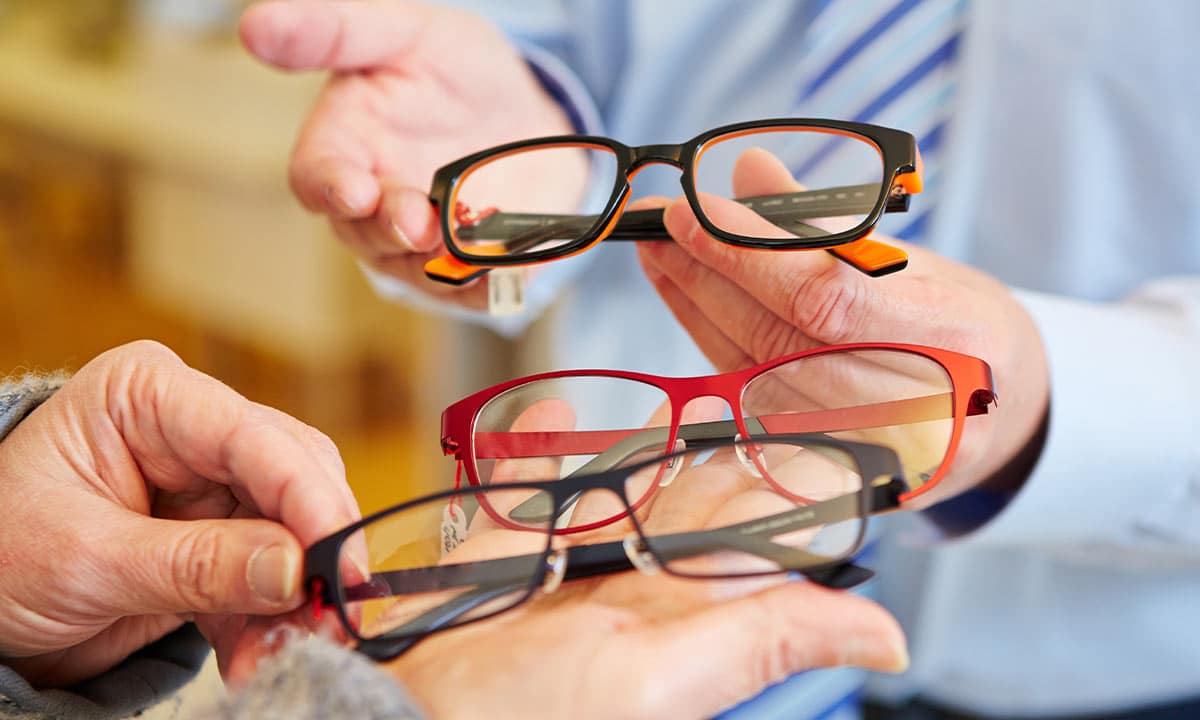The most common lens for the standard glasses wearer is single vision, for which you can get a number of different coatings and treatments including anti-scratch, UV tinting and anti-glare. But what happens if you have a need for multiple prescriptions? Bifocals and varifocals allow the wearers to only need one pair of glasses despite the varying types of lenses needed for their vision.
Keep reading to find out which is best for you.
What are bifocal lenses?
Bifocal lenses are the ones you see with a distinct line across the middle, catering for two types of lenses, with long-distance at the top and up-close at the bottom. These are usually, but not exclusively, prescribed to wearers with the age-related condition presbyopia, whereby eyes begin to have to work harder to focus on anything up close.
Due to the nature of the lens, the wearer has to make a distinct motion to focus either above the line or below it, depending on where and what they want to look at.
Prices From £35.00
The benefits of bifocal lenses
- Convenient
- Cheaper than varifocals
- Initially, they’re easier to get used to
What are varifocal lenses?
Varifocal lenses cater for multiple prescriptions, with progressive lens zones rather than a distinct top and bottom dividing line. Distance viewing is still towards the top area of the lens, but as the item being looked at gets closer, the wearer gradually moves their eyes lower to keep the object in focus.
The finish allows for a gradual transition from a distance, down into up-close viewing as you move your eyes to the bottom of the lens, allowing for middle distance and quick changes of focus within one lens, as the wearer needs it. Looking through the bottom of the lens will again give the best focus for items up close.
The benefits of varifocal lenses
- Can accommodate more prescriptions of lenses
- More aesthetically pleasing as there’s no line in the lens
- Can see at all distances
Bifocals vs Varifocals
So let’s compare the two types of lenses.
Wearers may find varifocals more aesthetically pleasing thanks to the single vision appearance. Additionally, although they may be initially more difficult to get used to, when they have got used to them, varifocals will provide a more comfortable viewing experience.
Bifocals tend to be more cost-effective and a good option if you are looking purely for function, with two distinct prescriptions. They are generally a more budget-friendly option.
Why choose Lensology?
Whatever you decide on, Lensology can advise and source the correct lenses for your prescription.
Save with Lensology
Our range of lenses can offer massive savings compared with the high street. Our bifocals start from as little as £35.00 versus the high street RRP of £80.00 – £120.00, and our varifocals start from £64.00 – with the high street RRP starting from £120.00 to £170.00. A huge difference in cost, and with regular deals with as much as £20.00* discounted off the price, the savings are undeniable. See our latest deals here.
Request a free pack today, or contact us if you have any further questions about the right lenses for you.







